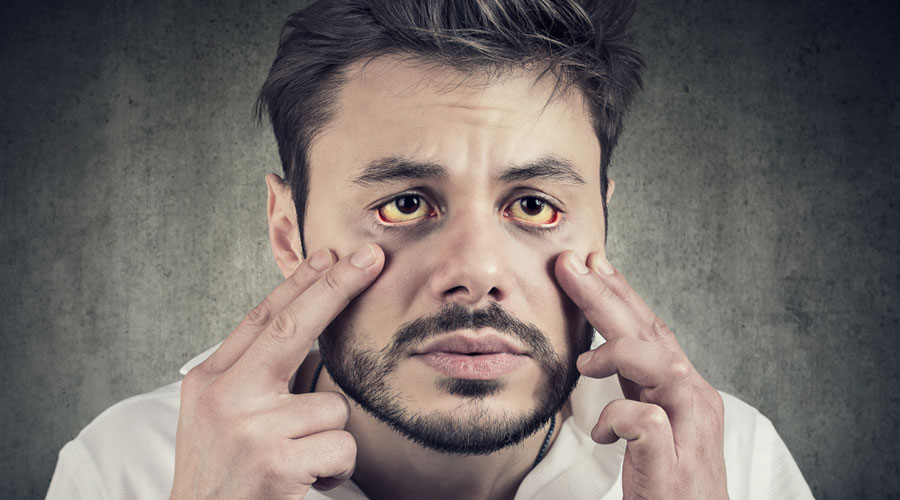Jaundice, contrary to popular perception, is not a disease. It is a generic descriptive term for increased quantities of the bile pigment, bilirubin, in the blood and is derived from a French word meaning yellow. This bilirubin gets deposited in the eyes and the skin, turning them yellow. The human eye can discern this yellow colour when the level is three times the normal.
Most people equate jaundice with an infection of the liver (hepatitis). The organism most commonly causing this is the hepatitis virus, of which there are five main types — A, B, C, D and E. Other organisms, such as herpes or cytomegalovirus, malaria and leptospirosis, too can cause jaundice. Severe septicaemia with bacteria can also damage the liver sufficiently to cause jaundice.
The hepatitis A virus causes 80 per cent of the jaundice in young adults. It spreads through contaminated food and water. Most people recover within two months, though symptoms of fatigue and nausea can persist as long as six months. Immunisation against hepatitis A is usually given to children after the age of one, as two doses six months apart.
Hepatitis B is a more severe disease. It occurs globally and can result in chronic liver disease, cirrhosis and death. It spreads through contact with infected human blood, saliva, vaginal secretions or semen. It can be prevented with three doses of hepatitis B vaccine. The hepatitis C virus spreads through contact with contaminated blood products and tattoo needles. There is no vaccine available but it responds well to antiviral medication. Hepatitis D and E usually cause mild, self-limiting disease. There is no vaccine or treatment.
Non-infectious hepatitis due to liver cell damage can occur with medication (such as an overdose of paracetamol), the use of anaesthetic agents and some toxic drugs. Consumption of alcohol on a regular basis over many years can damage the liver and cause jaundice, followed by cirrhosis, hepatic coma and death. Mouldy raw peanuts contain aflatoxin, which is toxic to liver cells and can cause jaundice.
Bilirubin is produced when old red blood cells are broken down in the spleen and liver. If the number of RBCs destroyed is greater than normal, the liver is unable to cope with an overload of pigment. This occurs in some hereditary blood disorders such as thalassaemia, sickle cell disease or hereditary metabolic defects.
Neonatal non-infectious jaundice can occur due to immaturity of the liver cells in a newborn or a mother-baby blood group incompatibility (Rh or ABO). This jaundice is usually self-limiting and treatable. During an attack of jaundice, rest, adequate fluids and a low-fat diet will help the liver recuperate. Since all jaundice is not the same, it is important to determine the cause of it.
The writer is a paediatrician with a family practice at Vellore and the author of Staying Healthy in Modern India. If you have any questions on health issues please write to yourhealthgm@yahoo.co.in










